Abstract:
Over the past three decades, rapid economic, social, and cultural changes in China have shifted dietary patterns from a traditional diet high in staple foods, coarse grains, vegetables, and fruits to a Western diet high in animal foods and other energy-dense foods. Currently, the Chinese market offers more than 500 different kinds of processed meat products, including both Chinese-style and Western-style options. Chinese-style products make up 45% of the total, while Western-style products account for 55%. Meat products served in Western-style fast-food restaurants are often perceived as safer than those in local traditional restaurants. However, the growing demand for fast-food meat products and the rapid expansion of the Western fast-food industry in China are contributing to serious public health issues, such as obesity, diabetes, cardiovascular diseases, and gastric and colorectal cancer. This study aims to investigate the consumption of fast-food meat products and evaluate their association with obesity indicators and cancer risk among the Chinese population aged 19–56 years. The daily consumption of fast-food meat products ranged from 3 to 9 g for males and 1.5 to 8 g for females. Additionally, individuals who consumed fast food twice or more per week had the highest BMI, ranging from 21.7 to 33.2 kg/m2 for males and 19.4 to 30.6 kg/m2 for females. Based on BMI data, 17% of men and 6% of women were overweight, while the obesity rates were 4.3% for men and 1.2% for women. Furthermore, the daily intake of genotoxic heterocyclic amines (HAs) from fast-food meat products ranged from 40.38 to 169.12 ng for males and 24.17 to 142.11 ng for females. Although the trend of fast-food meat product consumption has increased in recent years in the Chinese population, the risk of obesity and dietary HA intake remains lower than in Western countries. However, the consumption of products such as crispy chicken drumsticks, crispy fried chicken burgers, and traditional Chinese nuggets may still increase the risk of cancer, obesity, and other cardiovascular abnormalities.
Audience take away notes:
From this presentation, the audience will learn:
1. The significant dietary changes in China over the past three decades, moving from traditional diets to more Westernized patterns.
2. The prevalence and types of fast-food meat products available in the Chinese market and their consumption trends.
3. The association between frequent consumption of fast-food meat products and indicators of obesity among different age and gender groups in China.
4. The potential health risks associated with high consumption of fast-food meat products, including obesity, cancer, and cardiovascular diseases.
5. Comparative insights into dietary habits and health risks between China and Western countries regarding fast-food meat consumption.
The audience will be able to use the insights from the presentation in several practical ways:
1. Health Awareness: They can understand the evolving dietary landscape in China and its implications for public health, especially in terms of obesity and cancer risk associated with fast-food meat consumption.
2. Policy and Advocacy: Policymakers and advocates can leverage this knowledge to develop targeted interventions and policies aimed at promoting healthier dietary choices and regulating the fast-food industry.
3. Educational Initiatives: Educators and healthcare professionals can incorporate this information into educational programs to raise awareness among the public about the health risks associated with excessive fast-food meat consumption.
4. Personal Health Choices: Individuals can make informed decisions about their dietary habits, potentially reducing their consumption of fast-food meat products to mitigate health risks identified in the presentation.
5. Research and Further Study: Researchers can use this data as a foundation for further studies exploring correlations between diet, health outcomes, and cultural shifts in other regions or populations.
This presentation will provide valuable insights to various professionals in different capacities:
1. Healthcare Providers: Doctors, nutritionists, and public health officials can better understand the dietary trends and associated health risks in their patient populations, enabling them to offer targeted dietary advice and preventive care.
2. Policy Makers: Government officials and policymakers can use this information to formulate evidence-based policies aimed at promoting healthier dietary practices and regulating the fast-food industry to mitigate public health risks.
3. Educators: Teachers and educators can incorporate these findings into curricula to educate students and the community about the importance of healthy eating habits and the potential risks of consuming fast-food meat products excessively.
4. Market Analysts: Professionals involved in market analysis and food industry research can gain insights into consumer preferences and market trends related to fast-food meat products in China, informing business strategies and market forecasts.
5. Researchers: Academics and researchers can use this data to conduct further studies on diet-related health outcomes, cultural shifts in dietary patterns, and comparative analyses with other global regions, contributing to the advancement of knowledge in public health and nutrition.
This research provides a robust foundation that other faculty members could leverage to expand their own research or teaching in various ways:
1. Comparative Studies: Faculty could conduct comparative studies between China and other countries or regions experiencing similar dietary transitions, exploring variations in health outcomes and cultural influences.
2. Teaching Materials: Educators could use the research findings to develop case studies or course materials on topics such as global health, nutrition, public policy, or cultural influences on diet, enriching their teaching curriculum.
3. Policy Development: Researchers and policy-focused faculty could use the data to inform policy recommendations aimed at improving public health outcomes related to diet and nutrition.
This research primarily addresses public health issues rather than design-specific problems. However, it could indirectly benefit designers in the following ways:
1. Designing Health Campaigns: Provides data to create effective public health awareness campaigns and educational materials on healthy eating.
2. Product Design: Informs the development of healthier food product options and packaging by understanding consumer health trends and preferences.
3. Policy and Environment Design: Helps designers create environments (e.g., restaurants, school cafeterias) that encourage healthier eating habits by incorporating insights from dietary trends and health risks.
This research can indirectly improve design accuracy and provide new information in the following ways:
1. Health Campaign Design: Offers accurate data for designing targeted health campaigns promoting healthier eating habits.
2. Food Product Development: Provides insights for designing healthier food products and packaging that align with consumer health trends.
3. Nutritional Labeling: Informs the design of nutritional labels, ensuring they highlight important health information effectively.
4. Public Space Design: Assists in designing public spaces like restaurants and cafeterias to promote healthier eating environments based on dietary trends and health risks.
Other benefits:
1. Public Health Policy: Supports evidence-based policy making.
2. Educational Content: Enriches academic and public health education.
3. Consumer Awareness: Raises awareness about dietary risks and health.
4. Market Research: Guides market strategies for healthier product offerings.
5. Preventive Health: Helps in designing preventive health measures and programs.
6. Global Health Insights: Provides comparative data for global health studies.




